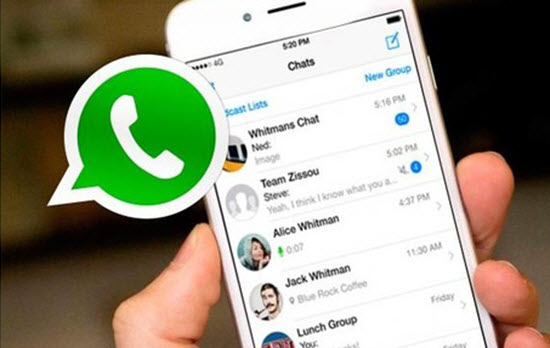How to Merge Multiple Video Files Using VLC Media Player
With just a single command, you can easily merge multiple video files with VLC Media Player.
Not every video is shot in one take. If you are running a YouTube channel or frequently post videos online, you may find yourself in a situation where you have to merge multiple video files into a single video.
Luckily, you can merge videos quickly by using VLC Media Player. Here's how to get started.
What Is VLC Media Player?
VLC Media Player is a free, open-source media player developed by the VideoLAN project. VLC is available on both desktop and mobile platforms.
Although special video editing software is typically used for editing video files, you may not have access to it, or perhaps you don't possess the skillset in order to use it. That's where VLC Media Player comes in.
Download: VLC Media Player for Windows | Mac | Linux | Android | iOS (Free)
How to Merge Multiple Video Files With VLC Media Player
To merge multiple video files into one using VLC media player, you'll have to run a command by specifying the locations of destination folders and the name of video files. Here, we'll show you how to do this on a Windows computer.
You can write this command separately in a text document, and then run it in the Command Prompt afterward. You may have trouble understanding the command at first, but it's pretty simple to use:
"VLC LOCATION" videofile1.mp4 videofile2.mp4 --sout "#gather:std{access=file,mux=ts,
dst=all.ts}" --no-sout-all --sout-keepLet's look at the different attributes of this command one by one.
- <VLC LOCATION>: The command specifies the location of the VLC.exe file on your computer. If you're running this command on a PC or laptop, you'll need to specify the full path from drives to folders and subfolders.
- Videofile1.mp4: This is the name of the first video you intend to merge.
- Videofile2.mp4: Similarly to videofile1.mp4, you have to specify the exact name of the second video that you want to merge with the first one.
- Dst=all.ts: This command refers to the destination video file, which is the one you'll get after merging the first and second videos. You can rename the file later in the same usual way, but it's required to specify one name here.
Now that you understand the attributes of the command, let's put it into action. To make it easy for you to specify the filenames in the command, you should place all the videos you want to merge in the same folder. Keep the filenames simple to avoid errors.
- Open the folder containing both videos.
- At the top of File Explorer, click the address bar.
- In the address bar, type cmd. After that, press Enter. Typing cmd will open up the Command Prompt using the same location as its current directory.
- Copy the above command and paste it into the command prompt.
This command is the template that you'll be using to merge your video files. Let's modify the command by changing the location address, filenames, and the name of the final destination video. It is also possible to edit the command in a text or Word document before inserting it into the command prompt.
Changing <VLC location>
To change the location of VLC, follow the steps below.
- Click on the Windows Start menu search bar.
- In the search bar, type VLC.
- Right-click on VLC media player, and click on Open File Location. This will open up the folder where VLC Media Player is installed or where VLC Media Player's executable file is present. It will usually open up a folder containing a shortcut of VLC Media Player, so in that case, you can look for the VLC folder manually.
- From the address bar, copy the folder address. This is the path for the VLC.exe file, which you have to add in place of <VLC location> in the command.
- Copy the address and paste it into the Command Prompt.
- Using Ctrl + V may not paste the command, so right-click and select Paste instead. Additionally, add \vlc.exe at the end of this address.
Adding the Video Filenames
Go back to the folder containing the video. Copy the names for both videos and add them to the command prompt. You have one last chance to rename the files to an easy-to-remember name, so do it now.
To make things simple, we have named the files 1.mp4 and 2.mp4. Let's add them to the command prompt.
Changing the Destination Filename
The last modification required in the command is to specify the filename of the final video file.
- With the command dst=all.ts, remove "all.ts" after the = sign.
- You can call it anything you like with an MP4 extension. Let's name it merged.mp4.
- Once you have added the VLC location, video filenames, and destination filename correctly, press Enter.
There is a possibility that the command may execute unsuccessfully. While executing the command, you may see the following error.
In that case, return to the folders containing the videos and set the files to open in FLV format.
- Right-click on the video file.
- Go to Properties > Details.
- Change format to FLV, and tap on OK.
Go back to command and replace the video filenames with 1.flv and 2.flv. Don't forget to change the format of your destination video file as well. Let's rename it to merged.flv.
Our final command looks like this:
"D:\VLC Download\vlc.exe" 1.flv 2.flv --sout
"#gather:std{access=file,mux=ts,dst=merged.flv}" --no-sout-all --sout-keepPress Enter to execute the command. As a result, VLC will merge the two videos, and you will see the final video with the name "merged" in the destination folder.






Comments
Post a Comment